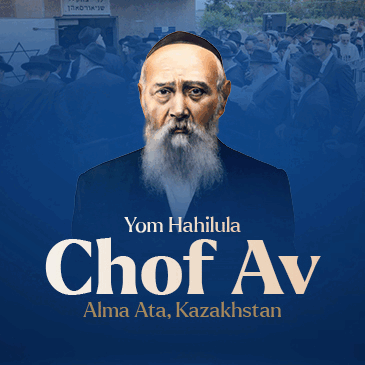
How Campus Chabad Rabbis Sermonize
Jonathan Gordon didn’t grow up particularly observant. Until his bar mitzvah, he attended High Holy Days services with his parents, but once he turned 13 he stopped going — he felt unengaged.
That is until he started his undergraduate education at the University of Southern California, where he resumed attending High Holy Days services at the Chabad Jewish Student Center at USC.
There, Gordon, who graduated in 2005, found more than just prayer. He found community, food and learning that he calls “readily digestible in today’s world.”
Now 32 and an attorney living in West Hollywood, Gordon returns almost every year to the historic Victorian Chabad House just north of campus to spend Rosh Hashanah and Yom Kippur with the family of Rabbi Dov Wagner, his wife, Runya, and the dozens of Jewish USC students who come for the holidays.
For campus rabbis like Wagner, the secret to a successful High Holy Days service isn’t a great half-hour (or longer) sermon placed strategically right before or after the Torah reading. In fact, some stay far away from the sermon that so many Jewish college students remember sitting through as kids.
The key — and it’s not a new one — is finding the right mix between teaching and leading.
Zach Dorfman, 25, of Beverly Hills said he resumed attending High Holy Days services while he was a student at California State University, Northridge, where he attended the ones led by Chabad Rabbi Chaim Brook. Like Gordon, Dorfman found holiday services to be “very boring” when he was growing up.
“I really had no connection and really had no patience,” he said, remembering his disconnect with services when he was a teenager.
Dorfman’s favorite aspect of of how Brook leads services?
“Throughout the service, there are explanations of the prayers, why we say the things we say,” he said.
Brook, who was quick to say that he’s wary of “scaring” the students with sermons, likes to focus on a major theme in the five- to 10-minute speech he gives before Neilah, the concluding service of Yom Kippur.
“When I do speak by Neilah, in the times when I feel that the students are ready to listen, I always speak about the idea of dating Jewish,” Brook said.
Neither Brook nor Wagner write speeches or sermons for the High Holy Days. Some of them jot down notes or simply speak extemporaneously.
“Most people don’t want a 45-minute sermon,” Wagner said. “They want relevant, meaningful ideas — inspirational ideas and stories that relate to their lives.” Instead of the “45-minute sermon,” Wagner relates most of his ideas through brief, five-minute talks and Chasidic stories, peppered throughout the service.
The hope is that the relatively long time spent with students on these sacred days will prove an ideal time for growth to begin.
“One of the things that I hope to accomplish and look forward to doing is planting a seed, so that some students and participants will come to study during the year.”
















Oy
No wonder our kids are ignorant. From a “professional” journalist…it’s “disengaged”, not “unengaged.”
Sorry, I know for some of you I’m nit-picking but it’s these constant grammatical errors that irk me & I just don’t have any interest in the article itself. If a so-called professional writer can’t be grammatically correct, how do we know the information is accurate? It’s all in the details. Grammarcheck & spellcheck exist….use them.